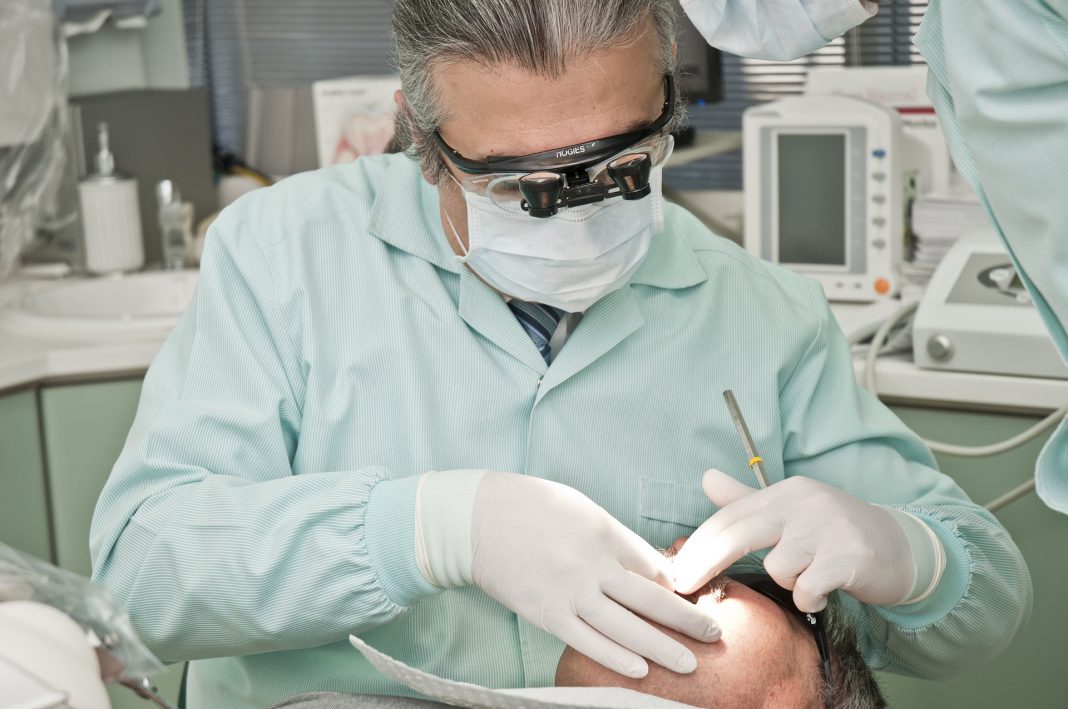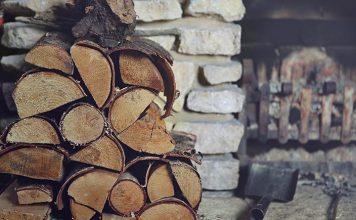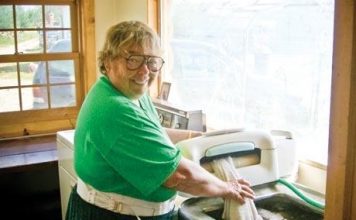 |
|
| Issue #75 • May/June, 2002 |
Enjoying lunch while looking out over the gorgeous view from your backcountry home, you bite down hard on a nut, hear a loud crack, and immediately feel excruciating pain from a broken tooth. Rare? No, it occurs all the time.
Dental emergencies can occur at home or in the wilderness without warning and can incapacitate a person in an instant. “No problem, I’ll get right over to the dentist,” you think. Hopefully, that is possible, but not always. You may live some distance from a dentist, it may be a night or weekend when it is hard to find one, or there may not be any available.
|
One of the first things that stop during a disaster is dental care. Major natural disasters, such as earthquakes, fires, or floods, and human disasters, such as terrorism or riots, close dental offices in a second. Electrical shortages, as seen in California recently, or any disruption of the regional power grids and there is no help since dentists can’t operate without electricity. Hospitals rarely have any dental services, so you could be on your own for hours or days.
Since dental first aid is rarely taught in first aid classes, information presented here is intended to help you in an emergency situation when no professional dental help is available. It is not intended to be a substitute for proper dental care.
Prevention
Living in a rural area, avid hunter, fisherman, and dentist Dr. Kenneth Lund has much experience with dental emergencies. “Nothing can ruin a good hunting trip like a toothache,” Dr. Lund says. “Anyone going on an extended trip, say over a week, should make sure they are current with their dental check-ups.” This is good advice for everyone, whether traveling or staying at home.
A routine visit to the dentist can prevent many painful dental problems. Professional cleanings help prevent gum infections. Fillings that are starting to fail can be fixed before breaking at an inconvenient time. A small cavity in a tooth that causes no pain can be easily repaired before it does.
Proper care of teeth is important. Brush and floss teeth regularly to avoid cavities and gum infections. This is especially important during a time of crisis, such as a disaster or evacuation. While brushing is the last thing on your mind, gingivitis or gum infections are more frequent during times of emotional and physical stress, especially when coupled with poor oral hygiene.
A toothbrush with toothpaste is always the best way to clean your teeth. If one is not available or you find yourself in an emergency survival situation, clean your teeth in other ways. A wash cloth or towel can be used to remove the soft, sticky, bacteria-laden plaque that develops on the surface of the teeth. The end of a thin green twig from a non-poisonous tree or bush can be used. Chew it until it is soft and fibery and use this end as a brush to clean the teeth and gums. Even your finger will work if nothing else is available.
Dental first aid kit
The first time I needed to treat a broken tooth while backpacking, I opened my first aid kit and there was nothing that would help. I’ll bet yours is the same. A few small, lightweight items available at a drug store or market can be added to your first aid kit to treat dental emergencies. I recommend the following:
- Dental floss
- Soft dental or orthodontic wax
- Cotton pellets
- Tempanol or Cavit temporary filling material
- Oil of cloves (eugenol)
- Small dental tweezers
When working in the mouth, remember to always wear protective gloves from your first aid kit to prevent the spread of infectious diseases.
Toothache
A toothache is caused by the inflammation of the nerve inside a tooth, called the dental pulp. Decay from a cavity that extends into the pulp can cause a toothache, as can a fracture of the tooth. If infection occurs in the tooth, it can cause excruciating pain and can spread through the root of the tooth into the jaw causing an abscess.
Symptoms of a toothache include pain in a certain tooth or over several teeth. At first, the pain may be mild, intermittent, and made worse with hot or cold foods or drink, cold air, and the pressure of biting. As it progresses, the pain may become constant, excruciating, and incapacitating.
Sometimes, an abscessed tooth will slowly drain infection into a large cavity. After a meal, when food is packed into the cavity, the drainage may be blocked and the pressure will increase in the tooth causing the toothache to become worse until the food is cleaned out.
Treatment of a toothache consists of locating the painful tooth and checking for any obvious cavity or fracture. Clean out any food with a toothbrush, toothpick, or similar tool. Then soak a small cotton pellet or, if not available, a small piece of cloth, in a topical anesthetic, such as a eugenol or benzocaine solution. This should then be placed in the cavity. A small pair of dental tweezers, like the type provided in commercial toothache kits, tick removing tweezers, or a small instrument like a toothpick is helpful in placing the cotton as it is often hard to get your fingers into the mouth. This topical anesthetic should give quick relief.
|
The type of topical anesthetic used is important. Dentists use pure eugenol for emergency treatment of toothaches since it is long-lasting, but this can be difficult to find. Oil of cloves is the same thing and is available without prescription at pharmacies and some health food stores. Be careful, however, as pure oil of cloves can cause chemical burns to the mouth and tongue if it gets off the tooth.
Commercial toothache medications that are available include Red Cross Toothache Medicine containing 85% eugenol, Dent’s Toothache Drops containing benzocaine and eugenol, and Orajel containing benzocaine. Some products include the small dental tweezers and cotton pellets that you will need.
Once the medicated cotton is in place, cover it with a temporary filling material, such as Tempanol or Cavit to prevent it from falling out. These are all soft, putty-like materials that can be molded into the cavity. If they are not available, soft dental wax or softened wax from a candle can be used. If a candle is used, melt some wax and let it cool until it is pliable before placing in the mouth.
A pain medication, such as 800mg Motrin every 8 hours, or prescription pain medicines, such as Vicodin, 1-2 every four to six hours, can be used if available. Do not place aspirin on the gum next to a painful tooth. Not only doesn’t it help, it causes a large, painful burn to the gum tissue.
Seek help from a dentist immediately. If it takes some time to find one, it may be necessary to replace the cotton pellet with another freshly soaked in topical anesthetic.
Gingivitis
Gingivitis is an inflammation of the gums (gingiva) most commonly due to inadequate tooth brushing. Gums become red, swollen, and may bleed while brushing the teeth. It is largely preventable by good oral hygiene and regular dental check-ups. When gingivitis causes pain and bleeding in the field, improve oral hygiene by brushing three times per day, followed by warm salt-water rinses. Over-the-counter anti-bacterial mouthwashes may also help.
Dental abscess
An infected tooth or gum infection (gingival infection) can cause a dental abscess, also known as a pus pocket. Food lodged between the teeth can also do so if not removed with dental floss.
Abscesses are normally located next to the offending tooth and cause pain and swelling. They can spread beyond the tooth to the face, floor of the mouth, or neck and it may be difficult to open the mouth or swallow. On rare occasions, dental abscesses can become life-threatening by getting so large that they block breathing or by causing fever or generalized infection throughout the body. Deal with any abscess immediately.
Antibiotics are required to treat abscesses. Go to a dentist immediately. If one is not available or if there is severe swelling go to a physician or hospital emergency room. When dental or medical help is not available and the situation is an emergency, oral antibiotics, such as penicillin 500 mg every six hours, can be given, after making sure the person is not allergic to the medication.
Warm salt-water rinses of the mouth every four hours may help the abscess to spontaneously drain, giving some relief of the pain. Do not place hot packs to the outside of the face unless directed to by your dentist or physician, as heat can spread the infection outward. Pain medications may be used as described above.
In the rare situation where no professional help is expected to be available for some time and no antibiotics are available, an abscess that is localized next to a tooth can be drained to remove the pus. A sterile scalpel, needle, or a fishhook (with the barb removed and disinfected by heating with a match) may be used to puncture the abscess. It will be painful to do, but there should be immediate relief from the abscess.
Broken filling or lost crown
Biting down on candy, nuts, ice cubes, and other hard or sticky foods are common ways to break a tooth or filling. If the tooth is not painful, be careful not to break it further during eating and see a dentist as soon as possible.
|
A temporary filling can be placed to prevent the tooth from becoming sensitive to hot or cold and to avoid food from packing into the hole left by the filling. Place a small amount of a temporary filling material, such as Tempanol or Cavit, into the hole in the tooth using a dental instrument or a flat tool such as the blade of a knife, popsicle stick, or similar tools. Have the person bite down on the temporary material to form it to their bite and then have them open their mouth and remove any excess material. These materials will harden some and remain in place. Soft wax also can be used in the same manner as filling a cavity described above.
Crowns (caps) can be pulled off teeth by sticky foods, such as caramel and salt-water taffy. If the tooth is not sensitive to hot or cold, save the crown and see a dentist as soon as convenient.
If the tooth is so sensitive that it prevents the person from eating, it may be necessary to replace it temporarily. Do this only if really necessary, as this is only a temporary solution and there is a risk that the crown could come off and be swallowed. Clean out any dry cement or material from the inside of the crown with a dental instrument or knife. Place a thin layer of temporary filling material, denture adhesive, or even a thick mixture of water and flour inside the crown. Making sure the crown is aligned properly on the tooth, have the person gently bite down to seat the crown all the way and see a dentist as soon as possible.
Injuries to teeth
A fall or blow to the mouth can injure teeth, most commonly the upper front teeth. Teeth may be in a normal position, but loose when touched, may be partially out of the socket or pushed back, or may be completely knocked out. Unless it is completely knocked out, the first thing you should do is see a dentist.
When one is not available within a reasonable time, a tooth that is out of place may be repositioned with steady, gentle pressure to bring it back into proper position. If it is very loose, gently biting on a piece of gauze can help hold it in place. A dentist should be seen as soon as possible, as the tooth may need to be splinted to hold it in place until healing occurs.
When a tooth is completely knocked out (avulsed), what you do in the first 30 minutes determines whether the tooth can be saved. The ligaments that hold a tooth into the jaw are torn along with the nerve and blood vessels when it is knocked out of its socket and it is essentially a “dead tooth.” When re-implanted into the tooth socket within 30 minutes the body will usually accept it and the ligaments will reattach. While it will require a root canal to remove the dead nerve and blood vessels, it will be a functioning tooth.
Over 30 minutes before it is re-implanted and the body treats it like foreign material and slowly dissolves the root over a period of weeks to months. Often the tooth needs to be extracted.
To treat an avulsed tooth, find the tooth on the ground or in the person’s mouth. If the socket is bleeding, have the person bite down on gauze pads placed over the top of the socket. A moistened non-herbal tea bag may also be used.
Check the tooth to make sure it is whole and not broken. Handling the tooth only by the crown, the part that normally shows in the mouth, clean off any dirt or debris by gently rinsing the tooth with sterile saline, disinfected water, or milk. It is important that you do not touch the thin, whitish colored layer of soft tissue covering the root. This is the important layer of periodontal ligament that will allow the tooth to reattach. Replace the tooth into the tooth socket and with gentle, steady pressure push it into place. Have the person bite down lightly on a piece of gauze to hold it in place and see a dentist immediately to have the tooth stabilized.
If a tooth cannot be immediately re-implanted, it should be wrapped in gauze and soaked in a container of sterile saline solution, milk, or the injured person’s saliva while they are immediately taken to a dentist. Some recommend keeping the tooth moist by placing it in the victim’s mouth. This does work, but the tooth can also accidentally be swallowed.
Dental emergencies are more common than most people realize. While you most often will be able to obtain help from a dentist, there are times when you may be on your own. Prevention, knowledge, and a few important items in a dental first aid kit can save you and your family during these times.


















Apologies for doubling up
https://surgicalmart.com/dental-instruments-sale-20percent/
These tools are quite likely of Chinese or Indian Manufacturer..
Keep in mind your not going into business you just want to assemble a working advanced kit.
You can look up others.. spend more..
In any case
You should practice on something, a clean soup bone will probably suit.. your just want to go thru the procedures.. Expanding the cavity and filling it.. You do not want to use your gold or silver … use some non rosen core electrical solder .. the idea is to work thru the procedures of cleaning and filling a cavity.. It does not have to be perfect to provide good training .
Be sure to thoroughly clean your instruments if your going to use the same ones in you Dental kit..Probably not a good idea but this is SHTF .. not a good place to be to begin with right?
Some of the components are so cheap to acquire some specifically for training purposes is not out of the question.
Pulling a tooth.. Anyone who has had a Dentist pull a tooth can tell you the Dentist does not Jerk the tooth out but patiently works it loose.
Only thing you really want to have some pain relief for this procedure..
But a rotten tooth is a ongoing danger to the persons health so it has to go.. and antibiotics to treat such an problem on a recurring basis will be scare.. so getting it done is a must.
All of which taken together makes acquiring the tools and knowledge to address this issue essential if one want to be reasonably prepared.
I have to add something ..
An .1/2 oz of pure silver or gold even a silver dollar and a little effort.. Improvised dentistry is not rocket surgery people have been doing it without a license for thousands of years.
If a tooth has an exposed nerve is badly cracked it gets pulled. If it an existing cavity and the filling has fallen out.. Clean out expanding the cavity area.. Heat up your silver and just replace it.. You will need a metal
I am not recommending this site just providing a link.. You can adequately equip yourself the basic tools
assembling what is an advanced dental first aid kit. $100.
You do have gold or silver already in your SHTF kit right? Separate cost
If you can .. provide some anesthesia.. Yes alcoholic drinks will work.. But poorly as impulse control diminishes with their use.. There are better choices if available.
Use as sterile protocols as your circumstance permits.
This applies across the board. Get and continuously acquire an abundant supply of antibiotics they will be the most difficult to obtain if things really go to heck. Absurdly (but not by accident) Effective pain managment medications are problematic)